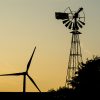Summary
The aim of this working paper is to contextualise the choice of design elements used in the first auction for renewable electricity in Spain, considering the international experiences from around the world, and to assess this choice taking into account the literature on the design elements in auctions. The analysis of the RES-E auction in Spain has shown that it is quite different from other international experiences regarding key design elements, namely investment-based support, uniform pricing, lax prequalification and penalties. The absence of a schedule for regular auctions in the future, seller concentration rules and organising stakeholder dialogue processes in the Spanish auction, which can be considered examples of best practices, are also uncommon features of renewable electricity auctions in most countries. In contrast, other design elements in the Spanish auction are widespread and are either best practices (disclosure of volumes) or their choice can be justified according to specific criteria (sealed-bid auctions, absence of local content rules, volume defined as capacity, technological specificity and price-only auctions).
Pablo del Río
CSIC
Wind farm close to a vineyard in Huéneja, Granada. Photo: Antonio Zugaldia (CC BY 2.0)



